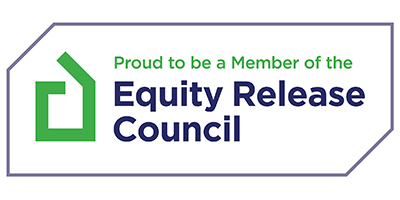In this article
As life expectancy rises and retirement lifestyles evolve, more people over 60 are exploring mortgage options that match their goals for later life.
Whether it’s a new purchase, staying in a beloved home, accessing funds for lifestyle choices, or helping family members financially, old age mortgages provide more flexibility than many realise.
Here at UK Moneyman we’ll help you explore old age mortgages work and what options may suit different needs.
Taking a Mortgage Past Retirement Age
Explained in 1 min 20 seconds
Find more videos like this on MoneymanTV
What Are Old Age Mortgages?
Old age mortgages are financial products designed specifically for those approaching or already in retirement.
Unlike traditional mortgages, they account for retirement income, including pensions, savings, and sometimes even future inheritance.
These mortgages often come with flexible terms and are built to meet the unique needs of older borrowers, who may be focused more on managing cash flow than building equity.
With options like Retirement Interest-Only (RIO) mortgages, equity release plans including lifetime mortgages, and part-and-part mortgages, it’s easier than ever to access the funds you need, stay in your home, and achieve your financial goals in retirement.
Common Reasons to Get an Old Age Mortgage in Later Life
Homeowners over 60 often find old age mortgages beneficial for various reasons:
Purchasing a New Home
Later-life mortgages can be the key to purchasing a new home, whether downsizing, relocating to be nearer family, or even finding a home that better suits evolving needs.
An old age mortgage allows you to buy without using all your savings or the full proceeds from the sale of an existing property.
This way, you maintain more financial flexibility while securing a home that fits your lifestyle and plans.
Repaying an Existing Mortgage
Some older homeowners turn to old age mortgages to pay off an existing mortgage. Refinancing an existing mortgage can reduce monthly payments, making them more manageable on a retirement income.
By switching to a product like a Retirement Interest-Only (RIO) mortgage or a lifetime mortgage, it’s possible to lower monthly costs or, in the case of a lifetime mortgage, eliminate monthly repayments altogether.
Breaking a Property Chain with a Bridging Loan
For those looking to move home but facing delays due to a property chain, a bridging loan can provide the funds needed to buy a new property before the current one is sold.
This option is particularly helpful for homeowners who’ve already found their ideal next home and want to secure it without waiting.
Bridging loans are short-term solutions that can be paid off once the original property is sold, making them a useful tool for “chain-breaking” in the home-buying process.
Speak to an Advisor – It’s Free!
Schedule a free callback from one of our experts today.
- All situations considered
- Transparent and honest mortgage advice
- We search 1000s of purchase and remortgage deals
Our customers rate us 4.9/5
Boosting Retirement Income
Many retirees seek an old age mortgage to supplement their income. A retirement interest-only mortgage, for instance, can free up monthly income by requiring only interest payments while deferring repayment of the loan’s principal.
This can make managing monthly costs more comfortable on a fixed income. Equity release mortgages such as an interest only lifetime mortgage or home reversion plan can also be used to release equity to provide an income.
Unlocking Equity for Lifestyle Choices
If travel, home improvements, or helping family members is on your agenda, a lifetime mortgage can provide cash without needing to sell your home.
The funds can be accessed as a lump sum or taken gradually, and these mortgages don’t require monthly repayments unless you wish to make them, with the loan repaid when the property is sold.
Home reversion schemes are also available for those where inheritance is not a consideration as these involve selling part of all your home in exchange for an income or lump sum.
Debt Consolidation
For those with existing debts, an old age mortgage can consolidate multiple payments into one, often at a lower interest rate. This approach helps simplify finances, especially helpful in retirement, where income may be less flexible.
Home Improvements
Retirement often brings new considerations around home comfort and accessibility. Old age mortgages designed for older borrowers can allow you to fund home modifications, like adding handrails or a stair lift, to ensure your home meets your needs in the years to come.
Providing Financial Support for Loved Ones
Some older homeowners choose to remortgage or release equity through an old age mortgage to help children or grandchildren with major expenses, such as education costs or property deposits.
This way, you can offer financial support without dipping into personal savings or investments.
Key Types of Old Age Mortgages
If you’re interested in a mortgage later in life, here are a few options that may suit your needs:
Retirement Interest-Only (RIO) Mortgages
RIO mortgages are interest-only mortgages aimed at borrowers over 55, where monthly payments cover only the interest.
This keeps payments low, and the loan itself is repaid when the property is sold, either upon moving into long-term care or as part of estate planning.
RIOs can be helpful for those with a steady personal pension or other retirement income but who prefer to keep payments manageable.
Lifetime Mortgages (Equity Release)
A lifetime mortgage, a type of equity release, allows homeowners to borrow against their home without monthly repayments.
Interest accrues over time, and the loan is settled when the property is sold. This can be a good option for those who want to stay in their home while accessing cash, though it’s worth noting that interest can accumulate quickly.
Interest-Only Lifetime Mortgages (Equity Release)
An interest-only lifetime mortgage, a type of equity release, is a lifetime mortgage where a monthly interest payment is made by the homeowners.
Paying the interest every month will stop the roll-up of interest. If at any point in the future monthly payments become affordable, a flexible plan will allow you to stop making payments and switch over to rolled up interest.
Part-and-Part Mortgages
With part-and-part mortgages, a portion of the loan is repaid monthly, while the rest is interest-only.
This hybrid approach suits those who want to reduce their outstanding balance gradually, without the higher payments of a full repayment mortgage.
It’s a flexible way to manage monthly cash flow while also ensuring some principal reduction over time.
Standard Remortgage Options for Better Rates
Remortgaging in retirement can lower monthly payments by securing a better rate, freeing up income for other uses.
This is especially beneficial for older homeowners with an existing mortgage who want to manage expenses on a fixed budget.
Many lenders today offer remortgage options tailored for old age mortgages, often taking pensions and retirement savings into account to ensure affordability.
Home Reversion Plan
A home reversion scheme, a type of equity release, involves selling all or part of your home in exchange for cash. These types of arrangement can be suitable for those where leaving an inheritance to family members is not important.
Bridging loans
A bridging loan is a type of ‘fast mortgage’ and is designed for those situations where speed is vital. Examples are to fix broken property chains, raise money quickly to pay a tax bill, home improvements, or something else.
The Importance of Mortgage Advice in Later Life
When it comes to old age mortgages, having expert mortgage advice can make all the difference.
Mortgages in retirement come with unique considerations, from inheritance impacts to the structure of repayments and how they align with your long-term goals.
With so many options to consider, the guidance of an experienced over 60s mortgage advisor can be invaluable.
A mortgage advisor with experience in later-life lending can assess your financial situation and recommend options tailored to your needs, ensuring you fully understand the benefits and any potential drawbacks. Mistakes in this area can be costly.
We offer all of our customers a free, no-obligation over 60s mortgage consultation at a time that suits.







